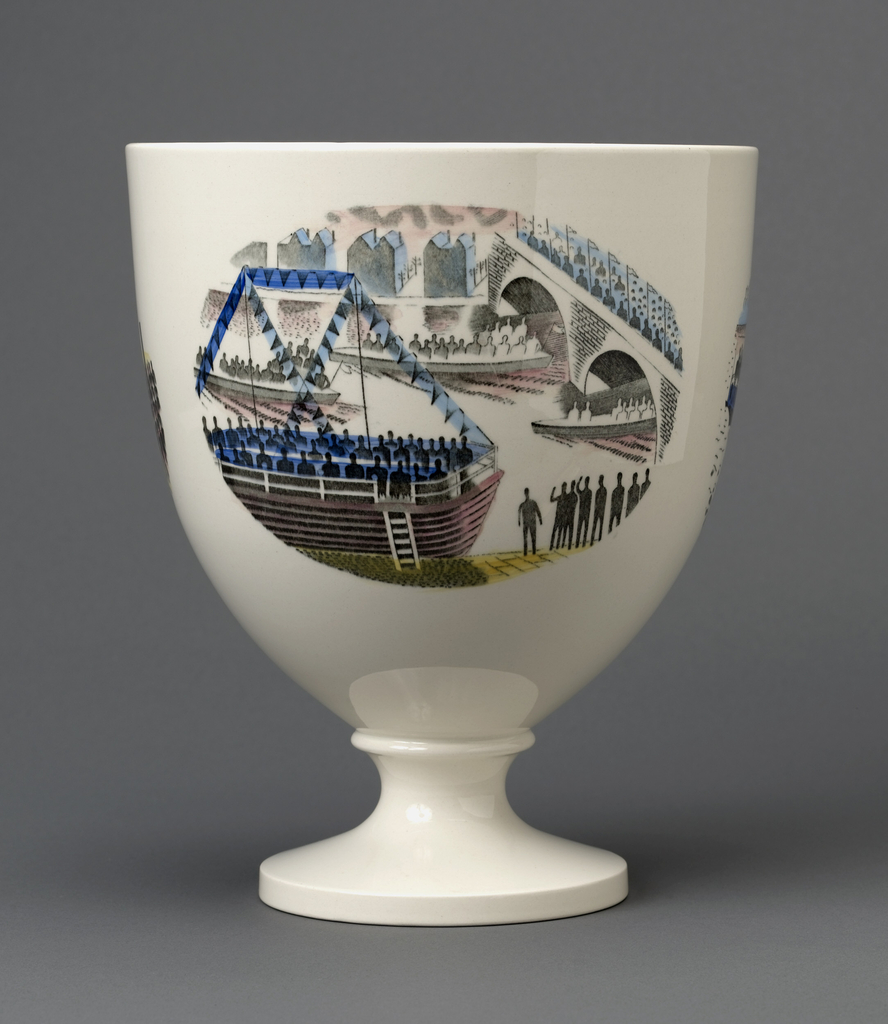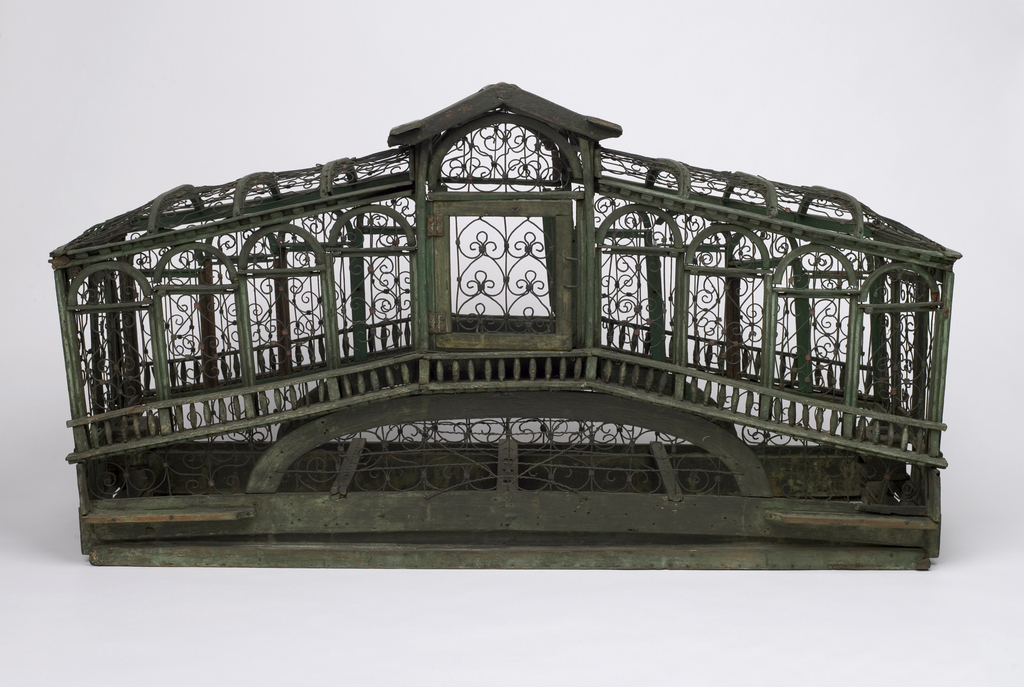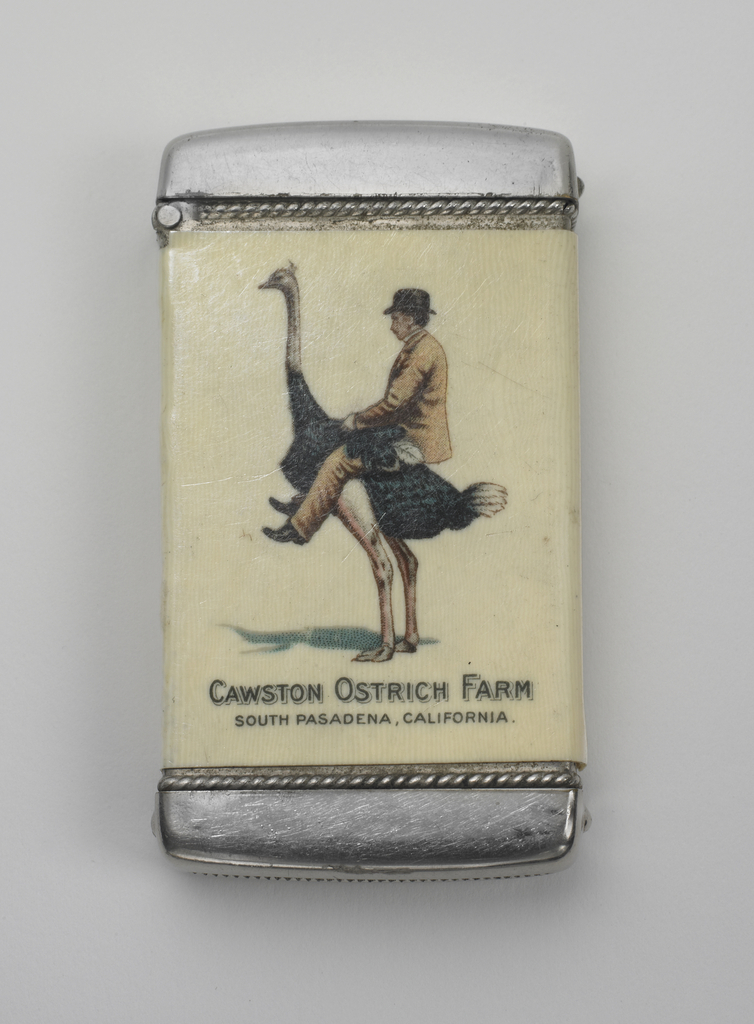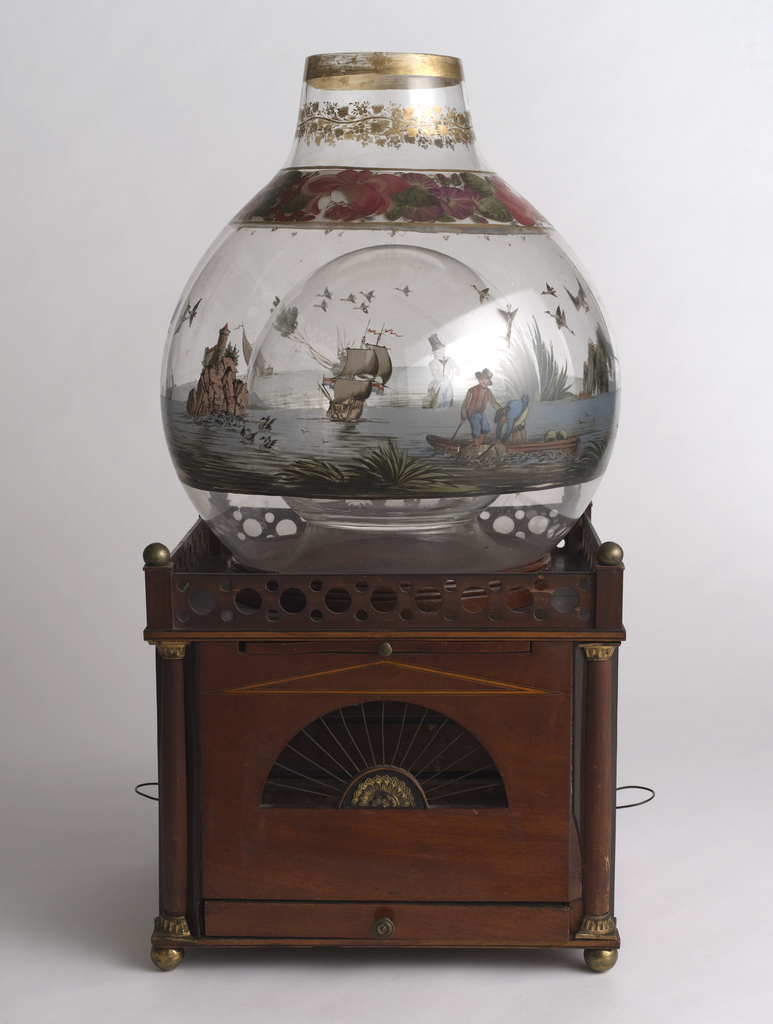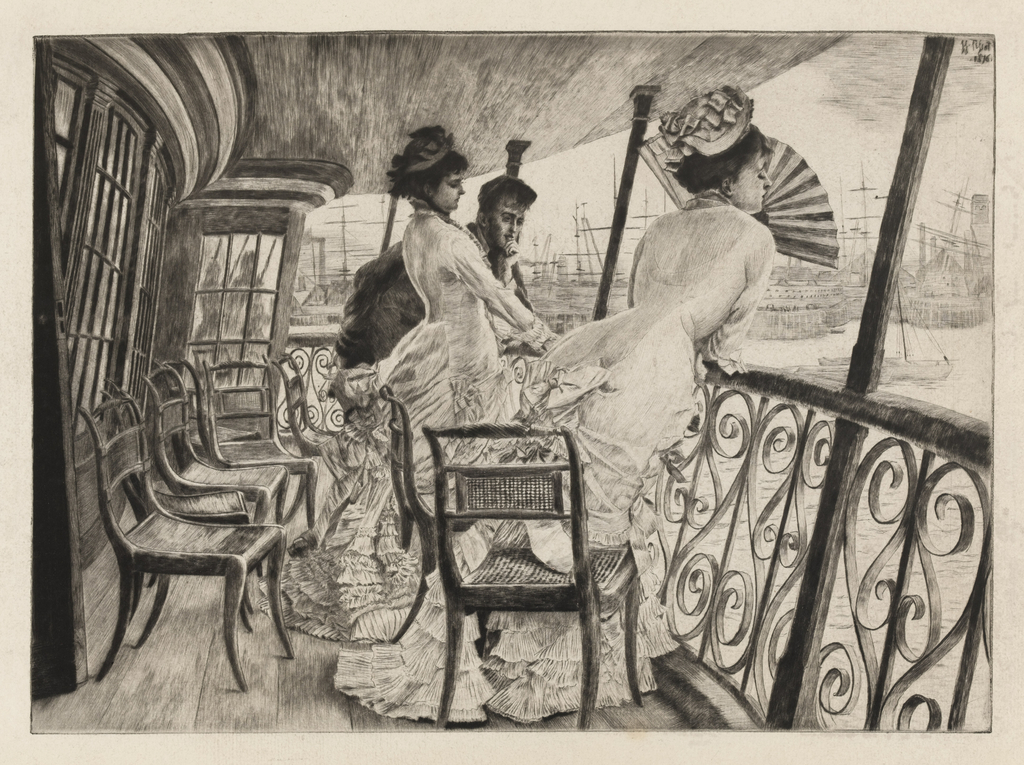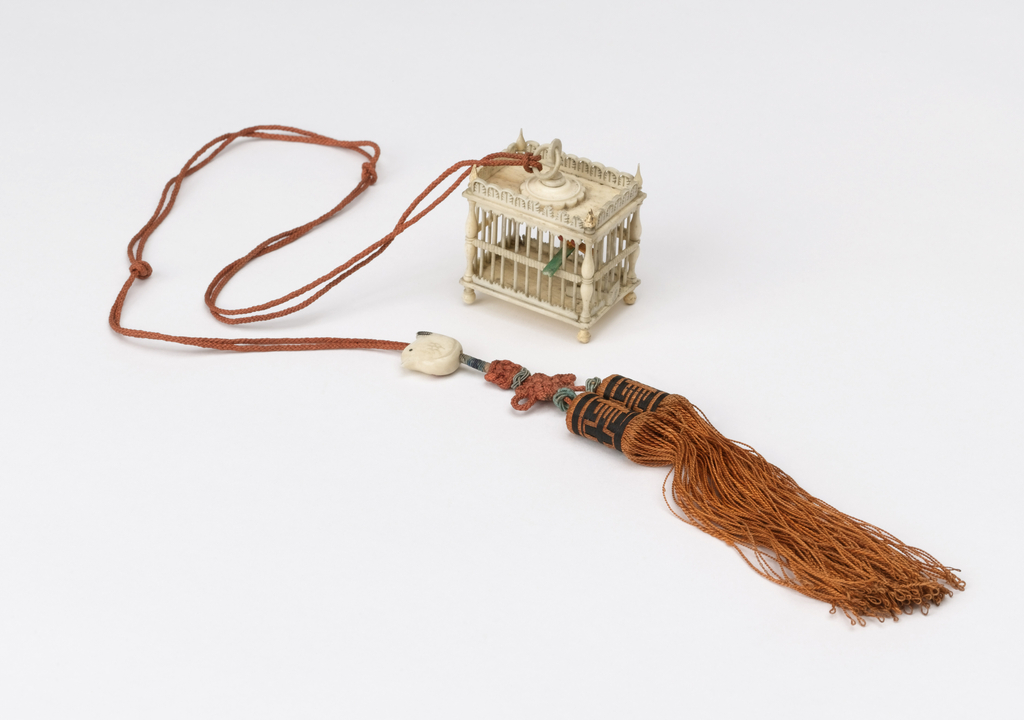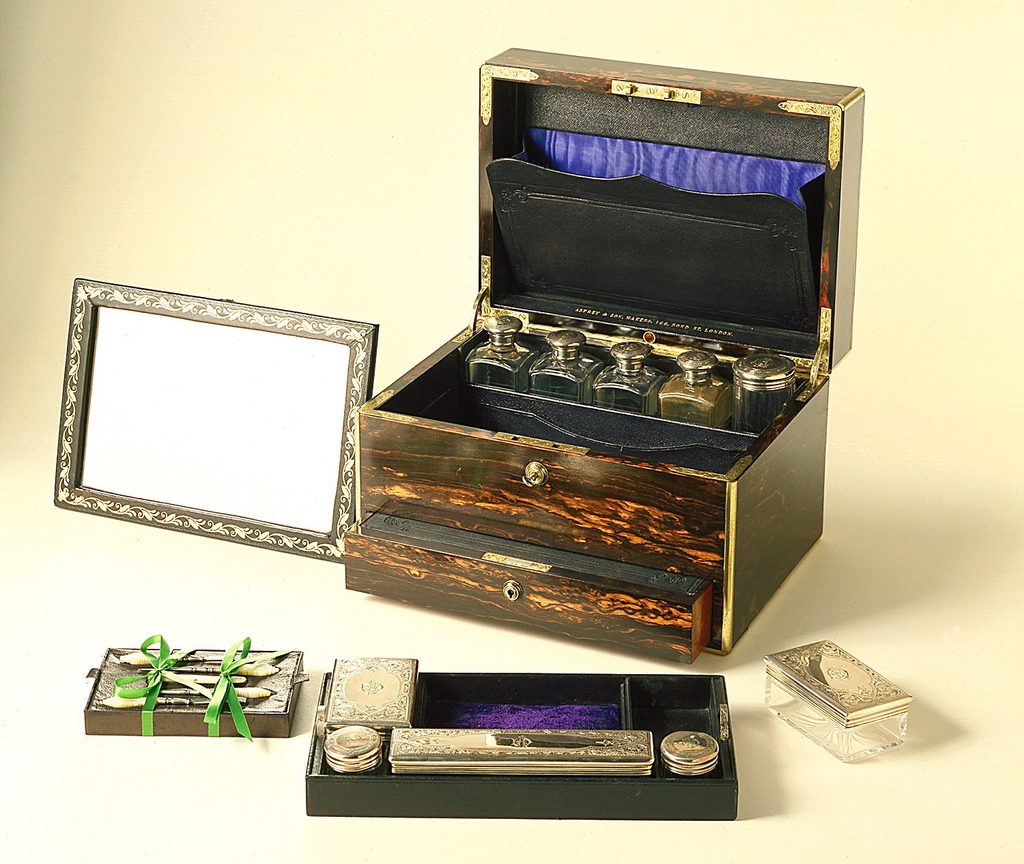This object, a rare combination of a birdcage and fishbowl, from The Netherlands in the early nineteenth century, expresses the eclectic tendencies of this period. The square birdcage serves as the base for a spherical, double-walled, blown-glass fishbowl. The roof of the wooden box is retractable, creating an opening into the inverted inner glass bowl. Ostensibly, the bird could fly up into this globe and appear to be swimming with the fish. The birdcage, made of mahogany, features wire details on the windows. The fishbowl is decorated with a polychrome enameled landscape scene of a castle-like building atop a rocky island, with boats and sailing ships at sea. One ship is flying a red, white, and blue Dutch flag.
Accessories were an important component of the well-traveled, and a number of travel cases in the collection exemplify the extent to which designers, and their patrons, celebrated their adventures and flaunted their status. Travel cases, made by companies such as Asprey & Son, became fashionable during the eighteenth century, when the Grand Tour was an essential part of a young man’s education.
